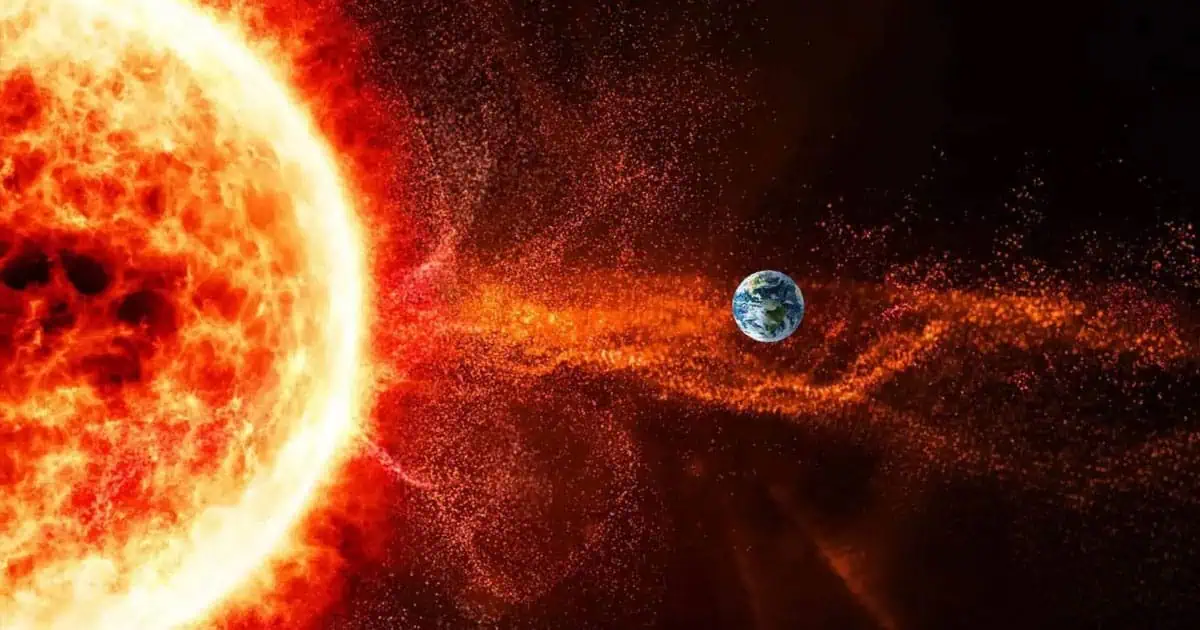A powerful G4 geomagnetic storm watch has been issued as Earth braces for impact from a massive solar eruption, with experts warning the planet could face major disruptions to power grids, satellites, and communications systems within the next 24 hours.
The National Oceanic and Atmospheric Administration’s (NOAA) Space Weather Prediction Center (SWPC) confirmed Tuesday that the Sun unleashed an X5.1-class solar flare.
It’s the strongest solar event of 2025 and the most intense since October 2024.
The flare erupted at approximately 5 a.m. EST on Nov. 11 from sunspot AR4274, an area that has produced multiple high-intensity solar events over the past several days.
According to NOAA, this marks the third consecutive day of X-class flares, a highly unusual occurrence signaling heightened solar activity as the current cycle approaches its peak.
“A flare is an eruption of energy from the sun that generally lasts minutes to hours,” the SWPC explained, noting recent flares of X1.7 on Sunday, X1.2 on Monday, and X5.1 early Tuesday.
Fast-Moving Coronal Mass Ejection Detected
Alongside the X5.1 flare, scientists observed a fast-moving coronal mass ejection (CME).
A CME is a vast cloud of charged plasma and magnetic material hurled directly toward Earth.
The ejected solar material is traveling at an estimated 1,400 kilometers per second, according to forecasters.
It is expected to partially impact Earth by midday Wednesday, Nov. 12.
Originally classified as a G3 storm, the alert was later upgraded to a G4 (Severe) Geomagnetic Storm Watch.
Such warnings are rare, with only four issued in the current solar cycle.
“The intensity of the CME will not be known with better certainty until it arrives 1 million miles from Earth and is observed by the solar wind observatories at that location,” the SWPC said.
Once it reaches that point, scientists will have less than an hour to issue final warnings, leaving little time to prepare if the storm proves stronger than expected.
Potential for Carrington-Level Impact
Experts say that if the incoming storm exceeds G4 intensity and reaches G5 (Extreme) levels, it could trigger effects similar to the 1859 Carrington Event, the largest recorded solar storm in history, which caused telegraph wires to burst into flames and disrupted communication systems worldwide.
Modern systems, however, are far more vulnerable.
A 2023 NOAA analysis warned that a Carrington-level storm today could cripple electrical grids, disrupt global communications, and impact critical infrastructure such as water systems, healthcare networks, and financial systems.
“If a solar storm comparable to the Carrington Event happened today, the effects could be catastrophic,” said NOAA space weather specialist Brent Dahl.
“Electrical grids are especially vulnerable…
“The worst-case scenario could involve a large-scale power outage that could affect a number of states in different areas of the country.”
Recovery from such an event could take years and cost trillions of dollars, according to federal assessments.
Power Grid Warnings Issued for Northern U.S.
The SWPC has issued electrical grid warnings for 11 northern U.S. states located above the 45th parallel, where geomagnetic impacts are most likely to occur.
The states under alert include Oregon, Idaho, Montana, South Dakota, Minnesota, Wisconsin, Michigan, New York, Vermont, New Hampshire, and Maine.
Officials warn that residents in these regions could experience voltage irregularities, GPS disruptions, or temporary power loss as the storm peaks.
Vulnerable Infrastructure, Limited Preparation
Experts have long warned that the U.S. power grid remains largely unprotected against severe solar storms.
Efforts to harden electrical infrastructure against electromagnetic and geomagnetic disturbances have repeatedly stalled in Congress.
Despite decades of research and multiple near-miss solar events, officials admit that most power networks remain highly susceptible to geomagnetic surges.
Now, with solar material racing toward Earth at 1,400 km per second, the world may soon learn just how prepared, or exposed, modern civilization truly is.
The SWPC expects the first measurable impacts of the storm to be detected within the next 24 hours.
Whether it passes with minimal disturbance or triggers widespread outages, scientists agree that the Sun’s growing volatility is a reminder that the next Carrington-level event is not a question of if, but when.
READ MORE – Interstellar Object 3I/ATLAS Changes Color, Begins Accelerating

Our comment section is restricted to members of the Slay News community only.
To join, create a free account HERE.
If you are already a member, log in HERE.